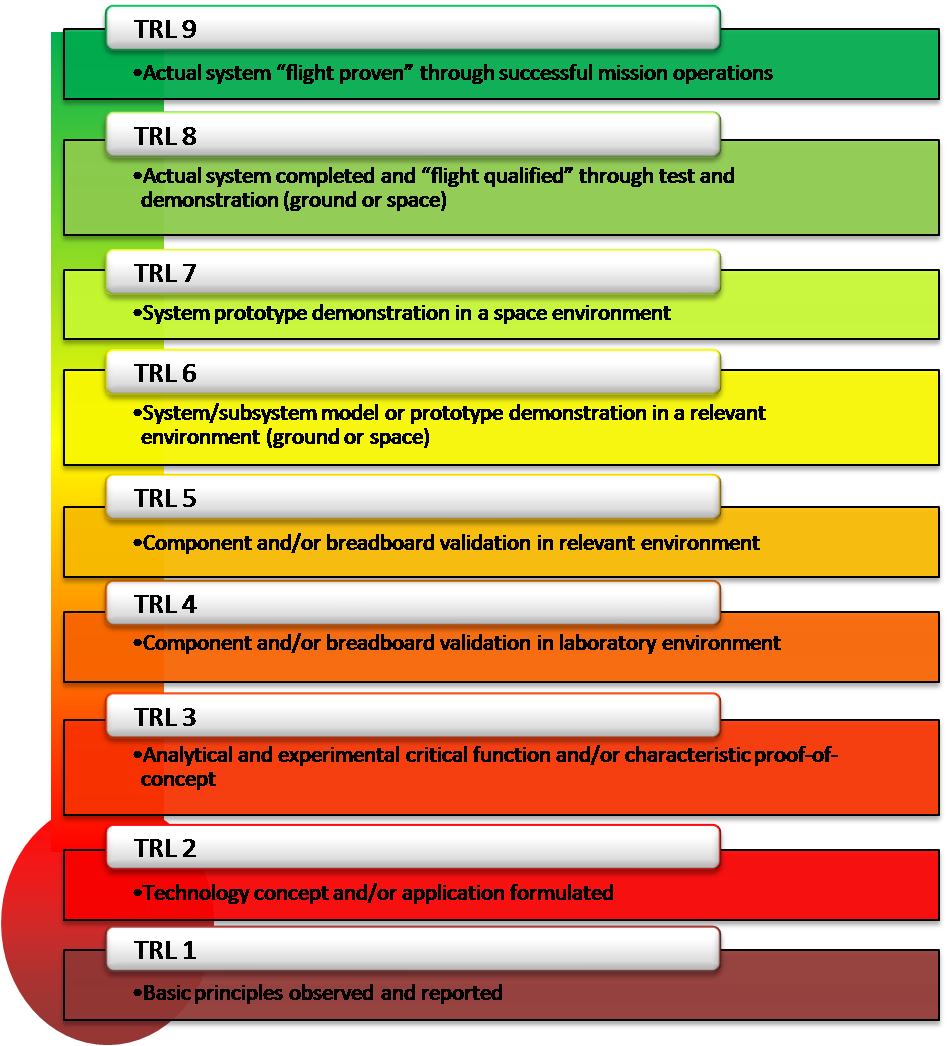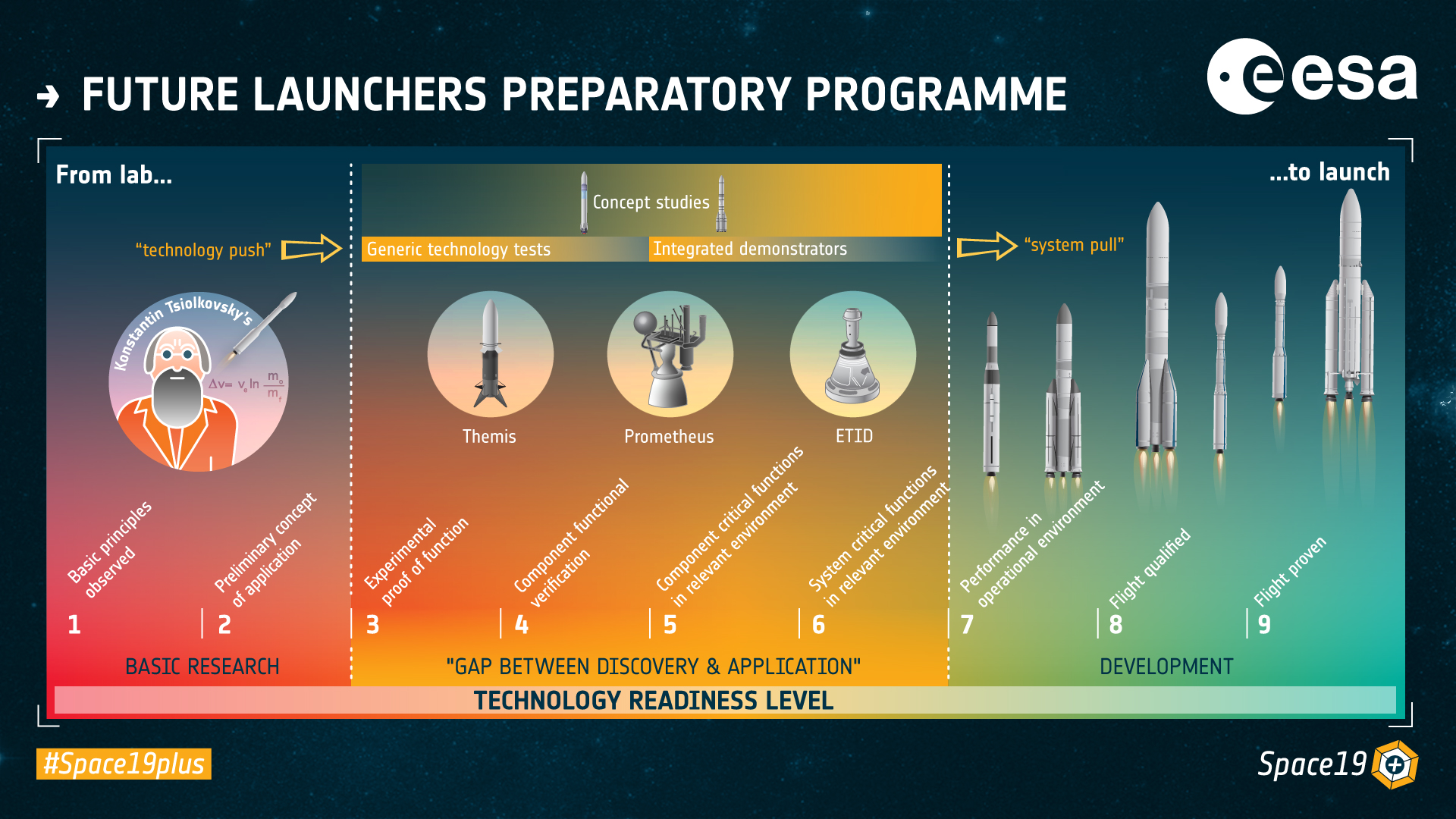Technology Readiness Level (TRL) assesses the maturity of technologies before they reach the market. It scales from 1 to 9, identifying the progression from concept to commercialization.
Technology Readiness Level (TRL) is a measurement system that evaluates the maturity level of a particular technology. This grading system helps innovators and investors understand and communicate the evolution stage of technology, from the initial idea (TRL 1) to its full deployment (TRL 9).
Originating from NASA to evaluate space technologies, various industries, and research institutions have widely adopted the TRL framework. It offers a structured approach to managing the development risk of new technologies, guiding investment decisions, and comparing the maturity of different technological solutions. By gauging a technology’s readiness, stakeholders can make informed choices about directing resources and planning for implementation or market launch.
- Introduction To Technology Readiness Levels (trials)
- Understanding The Trl Scale And Its Criteria
- The Impact And Application Of Trls In Various Sectors
- Challenges And Limitations Of The Trl Framework
- Advancing Beyond Trls: Supplemental Models And Tools
- Conclusion: Embracing Trls For Progressive Innovation Management
- Frequently Asked Questions Of Technology Readiness Level
- Conclusion
Introduction To Technology Readiness Levels (trials)
Technology Readiness Levels, or TRLs, are a method for estimating tech maturity. This system uses a scale from 1 to 9, with 1 being the least mature and nine the most. It started within NASA during the 1970s. The aim was to assess the readiness of space tech. Nowadays, many industries use TRLs.
Knowing a tech’s TRL helps in understanding risks and costs. It guides companies and agencies when investing in new tech. Each level has specific criteria that a technology must meet. This ensures that advancement is consistent and measurable. The TRL serves as an essential tool for managing innovation effectively.

Credit: www.nasa.gov
Understanding The Trl Scale And Its Criteria
The TRL Scale is a measure used to assess the maturity of a technology. From Level 1 to Level 9, each stage has clear criteria. At Level 1, basic principles are observed and reported. Level 2 sees the technology concept and application formulated. By Level 3, analytical and experimental proof of concept is found.
Mid-stage levels, like Level 4, demonstrate components that work in a lab. At Level 5, the integration of technology components in a simulated environment happens. Level 6 involves a prototype demonstration in a relevant environment.
| TRL Level | Criteria | Examples |
|---|---|---|
| 7 to 9 | 7: The prototype is ready for demonstration in an operational environment. 8: Actual technology completed and qualified through tests. 9: Actual technology is proven through successful mission operations. | 7: An engine prototype for a new aircraft. 8: Satellite navigation system before launch. 9: A regularly used satellite in orbit. |
Each TRL is a step forward on the path to full commercialization. The scale aids in making investment decisions, assessing risk, and understanding the development stage of a technology.
The Impact And Application Of Trls In Various Sectors
Technology Readiness Levels (TRLs) are crucial in shaping innovation across various sectors. Government entities like NASA and ESA rely on TRLs to gauge the maturity of new technologies before they journey into space. TRLs ensure that systems are safe and usable for astronauts and missions.
The adoption of TRLs spans from dynamic startups to established multinationals. TRLs provide a clear framework to help companies understand risks and readiness. Transparency in technology development is essential for attracting investments and fostering collaborations.
In academia, TRLs assist in assessing and funding research projects. Grant authorities can evaluate a project’s progress and potential impact effectively. Through TRLs, educational institutions can strategically direct funds to research that aligns with global advancements.
Challenges And Limitations Of The Trl Framework
The Technology Readiness Level (TRL) framework faces various challenges. Critics argue that this assessment method can hinder innovation. They fear that too much focus on TRLs may lead to innovation stagnation. The system sometimes fails to encourage risk-taking in developing pioneering technologies.
Using TRLs can also misrepresent the actual progress of a technology’s development. This misjudgment may result in premature funding cuts or insufficient investor interest. This is because TRLs often do not account for the complex nature of modern tech advancements.
To stay relevant, the TRL framework must evolve. It should better accommodate the fast-paced growth seen in emerging fields. For example, in artificial intelligence and biotech. Changes can make TRLs more effective in advancing future technologies.
Advancing Beyond Trls: Supplemental Models And Tools
Technology Readiness Level (TRL) is vital for assessing project maturity. Yet, TRLs work best when integrated with other innovation measurements. This synergy enhances overall insight into development progress.
Practitioners now embrace Manufacturing Readiness Level (MRL) and Investment Readiness Level (IRL). MRL measures the production stage readiness, which is essential in turning prototypes into market-ready products. IRL assesses the business potential, focusing on securing funding and commercial viability.
The quest for growth leads to a composite framework. This structure will combine multiple readiness metrics. It offers a more nuanced innovation evaluation. Shifting towards a dynamic framework helps stakeholders make better-informed decisions. This system understands development stages are not linear nor isolated. The result is a more comprehensive innovation assessment.

Credit: innovaccer.com
Conclusion: Embracing Trls For Progressive Innovation Management
Technology Readiness Levels (TRLs) are essential in managing tech advances. They guide the growth of new tech, ensuring ideas become valuable products. Employing TRLs can track progress and identify potential hurdles early on. This helps in making informed decisions and steering projects towards success.
To use TRLs well, recognize each level’s unique demands. Begin by accurately assessing the current TRL of your tech. Strategic planning and strict adherence to TRL criteria are crucial. This ensures that the TRL application is both consistent and efficient.
As we advance, TRLs must evolve to meet future innovation challenges. This will involve integrating new knowledge and adapting TRL frameworks to be more flexible. By doing so, TRLs will remain relevant and beneficial in a swiftly changing tech landscape. Keeping pace with these changes is essential for continuous improvement in innovation management.

Credit: www.esa.int
Frequently Asked Questions Of Technology Readiness Level
What Is Technology Readiness Level Rating?
The Technology Readiness Level (TRL) rating measures a technology’s maturity from concept (Level 1) to practical application (Level 9).
What Is The Trl Level Standard?
The TRL level standard, or Technology Readiness Level, measures the maturity of technologies on a scale from 1 to 9 before they reach commercialization.
What Is Trl 5 Technology Readiness Level?
TRL 5 signifies a medium-fidelity technology prototype tested in a relevant environment, demonstrating its potential viability.
What Is The Trl1 Technology Readiness Level?
TRL 1, or Technology Readiness Level 1, represents the earliest phase of technology development where fundamental principles are observed and reported, initiating research and concept exploration.
Conclusion
Understanding Technology Readiness Levels (TRLs) is crucial for innovation management. It guides developers from concept to launch effectively. Embracing TRLs enhances project success and investor confidence. As tech evolves, mastering TRLs proves indispensable for businesses and researchers alike. Ready to elevate your next venture?
Embrace TRLs for a smoother journey.
I really like your website post